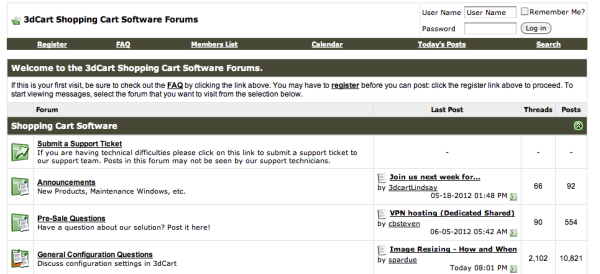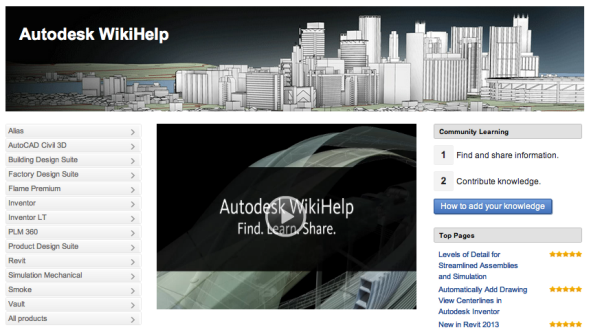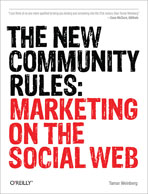This is a guest post by Michael Silverman.
The social web has opened the communication floodgates. While most brands look to make a name for themselves on Facebook and Twitter, other businesses take a more introspective approach. Can’t a strong social media initiative start inside the walls of your website?
If you’re a business that carries a heavy customer support burden, you have options. Maintaining traditional channels like phone, email and live chat support are a must—but a solid support community can cut that burden drastically, saving you time and money. You have the opportunity to build a library of content populated largely by your own customers.
But good communities are more than support channels. They entice higher brand loyalty by enhancing ‘insider’ status. Customers who participate, create content and connect with other community members become loyal brand advocates. They feel a stronger connection with your company, increasing the chance that they’ll stay customers for a long time.
Support communities—forum sites, wikis or any venues that include user-generated content—are surprisingly self-sufficient. And the more you work on getting members to engage, the more productive they become. An effective support community relies on members to generate much of the support. Designating a community manager to monitor activity is a necessity, but that doesn’t mean your manager has to be involved in every conversation.
Before you doubt the power of the support community, take a quick look at some of today’s most successful brands. Everyone from Apple to Starbucks leverages online communities to impact their businesses.
It’s Worked Before.
From small business to the enterprise, brands consistently prove the power of online community. Take a look at some strong examples of community support.
3dcart Software Forums: As one of the leading shopping cart software platforms on the market, 3dcart prides itself on customer support. The company works with small business internationally to keep online retailers running efficiently while offering them high-value marketing tools.

A few years ago, 3dcart extended its customer support to include free 24/7/365 phone support for customers of all sizes. They maintain other support channels over email and live chat. But the forums have found great success, logging 4,742 threads and 23,826 posts. More than 2,000 of the company’s 15,000 customers find solace in the support community.
According to 3dcart CTO Jimmy Rodriguez, the 3dcart software customer support forums have cut the customer service burden by as much as 10 percent, saving support resource time to focus on pressing issues.
WUGspace (What’s Up Gold Community Support): For its popular What’s Up Gold network management product, Ipswitch has maintained a community support structure for years. Initially, the community functioned entirely on the strength of customers. Now, community managers run WUGspace. They focus on making sure no one’s question goes unanswered.

Community manager Jason Williams, along with other Ipswitch staffers, keeps things interesting by creating monthly contests, maintaining a blog to keep members plugged into news, and adding related events to a rolling calendar. Because WUGspace generates such great content, he plans to leverage it as a marketing tool in the near future.
Autodesk WikiHelp: Another software behemoth, Autodesk’s engineering niche introduces a decidedly heavier technical element than previous examples. As a result, it requires a much larger resource library to keep customers up to speed.

Instead of employing an army of technical writers to build manuals and other instructional content, Autodesk’s WikiHelp community is moderated by experts who monitor the creation of instructional content—by actual customers. The community can than rate articles to filter the most useful information.
To date, Autodesk’s WikiHelp community has seen more than 3 million visits. Registered users number 30,000+, and more than 2 million pieces of content have been contributed.
Symantec Connect: Like Autodesk, Symantec is a gigantic software provider with a huge audience of businesses and consumers. With so many customers spread across so many products, the company has a huge customer support burden.

Launched in 2009, Symantec Connect boasts 270,000+ community members, 95 percent of whom create content, taking the burden of customer support off of the company. The company still employs a support team to monitor the forums and other community elements, but it has a robust rewards system in place to encourage engagement and contributions from community members.
As a result, Symantec Connect has logged 900,000+ pieces of content, creating a gigantic, interactive knowledge center that monitors itself. Customers visit to ask questions and share knowledge, finding and sharing answers that power a tight-knit group of brand advocates.
Strong communities require the right touch.
Community building isn’t easy. Your first step is implementing the right tools to facilitate communication.
For smaller companies, getting started may be as simple as creating a forum site you can attach to your website and list under support resources. To wipe startup costs, check out a free open source solution like phpBB. vBulletin is another powerful option with a small upfront cost.
Medium to enterprise companies may require more powerful solutions. If you want a scalable solution with plenty of feature options, Drupal is a great open source solution that requires some custom programming. For an out-of-the-box community, Acquia, one of the most influential companies in Drupal, put together a package called Drupal Commons that builds off on Drupal but requires no custom programming.
Once your community website is set up, consider seeding it with members and content before you launch it. Offer perks to loyal customers to take part, or fill your community with staff members. Seed the community with helpful content to get conversations rolling and designate a few areas for topical discussion.
Entice customers to take part in the community by offering perks and previews of new products and services. Promote it through your marketing channels to get the word out. Once you have the ball rolling, you’ll be well on your way to cutting support costs and building greater brand loyalty.
Remember, building a strong community takes some time—but in the end, it’s worth it. Bring the conversation within the walls of your brand, and your customers will thank you for it.
In addition to founding and leading Chicago-based Duo Consulting, Michael Silverman has headed up a number of online community development projects for 15 years. He just launched the book on online communities, Capturing Community: How to Build, Manage and Market Your Online Community.





Anything that includes the words “cut costs” is surely a crowd-drawer. But you have some real gems of thoughts here. Building a community will surely make you closer to your customers, and that will allow them to have a venue to share their thoughts about your products.
This is a great idea – if you can get folks to actually contribute to the community. Even with seeded content, its still tricky to get people to take the time to post if it appears no one else is doing it. Talking your existing customers into joining seems essential, or the project may just fizzle.
It’s true, I used to use Ubuntu Forums a lot and they really helped with useful and quick answers.